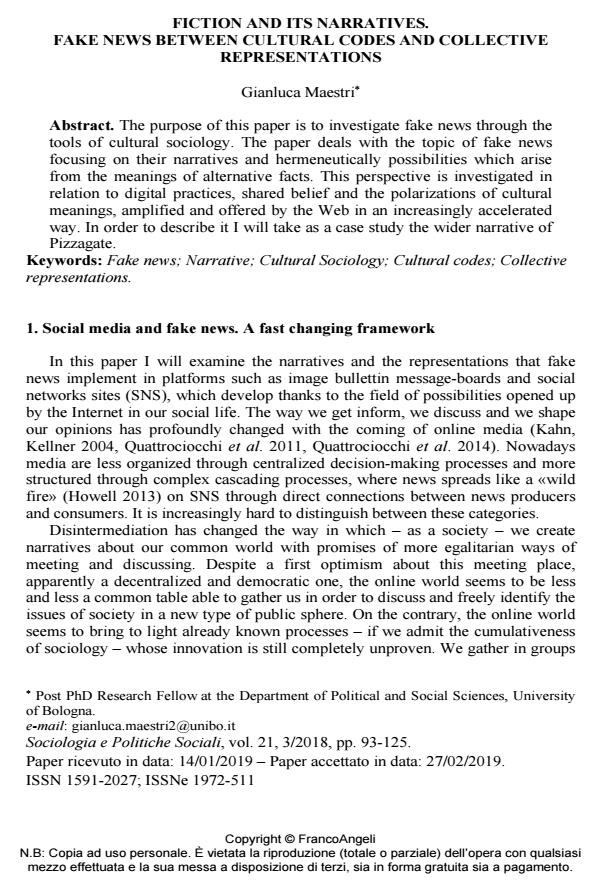Fiction and its narratives. Fake news between cultural codes and collective representations
Titolo Rivista SOCIOLOGIA E POLITICHE SOCIALI
Autori/Curatori Gianluca Maestri
Anno di pubblicazione 2019 Fascicolo 2018/3
Lingua Inglese Numero pagine 33 P. 93-125 Dimensione file 334 KB
DOI 10.3280/SP2018-003006
Il DOI è il codice a barre della proprietà intellettuale: per saperne di più
clicca qui
Qui sotto puoi vedere in anteprima la prima pagina di questo articolo.
Se questo articolo ti interessa, lo puoi acquistare (e scaricare in formato pdf) seguendo le facili indicazioni per acquistare il download credit. Acquista Download Credits per scaricare questo Articolo in formato PDF

FrancoAngeli è membro della Publishers International Linking Association, Inc (PILA)associazione indipendente e non profit per facilitare (attraverso i servizi tecnologici implementati da CrossRef.org) l’accesso degli studiosi ai contenuti digitali nelle pubblicazioni professionali e scientifiche
The purpose of this paper is to investigate fake news through the tools of cultural sociology. The paper deals with the topic of fake news focusing on their narratives and hermeneutically possibilities which arise from the meanings of alternative facts. This perspective is investigated in relation to digital practices, shared belief and the polarizations of cultural meanings, amplified and offered by the Web in an increasingly accelerated way. In order to describe it I will take as a case study the wider narrative of Pizzagate.
Parole chiave:Fake news; Narrative; Cultural Sociology; Cultural codes; Collective representations.
Gianluca Maestri, Fiction and its narratives. Fake news between cultural codes and collective representations in "SOCIOLOGIA E POLITICHE SOCIALI" 3/2018, pp 93-125, DOI: 10.3280/SP2018-003006